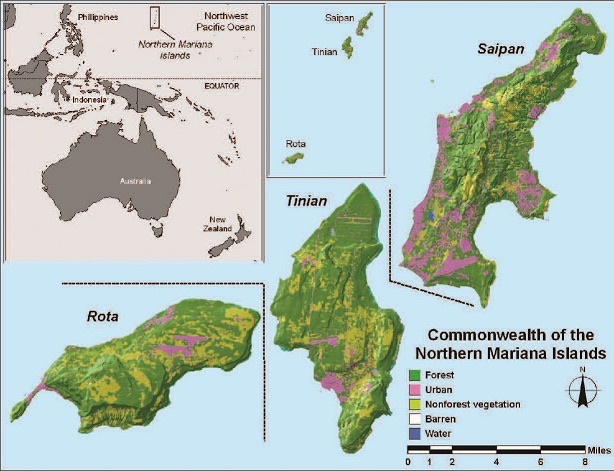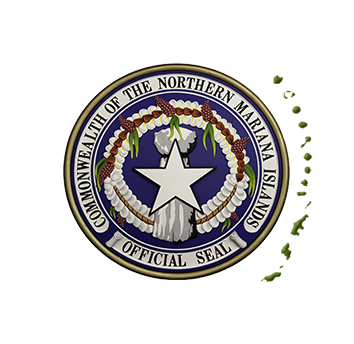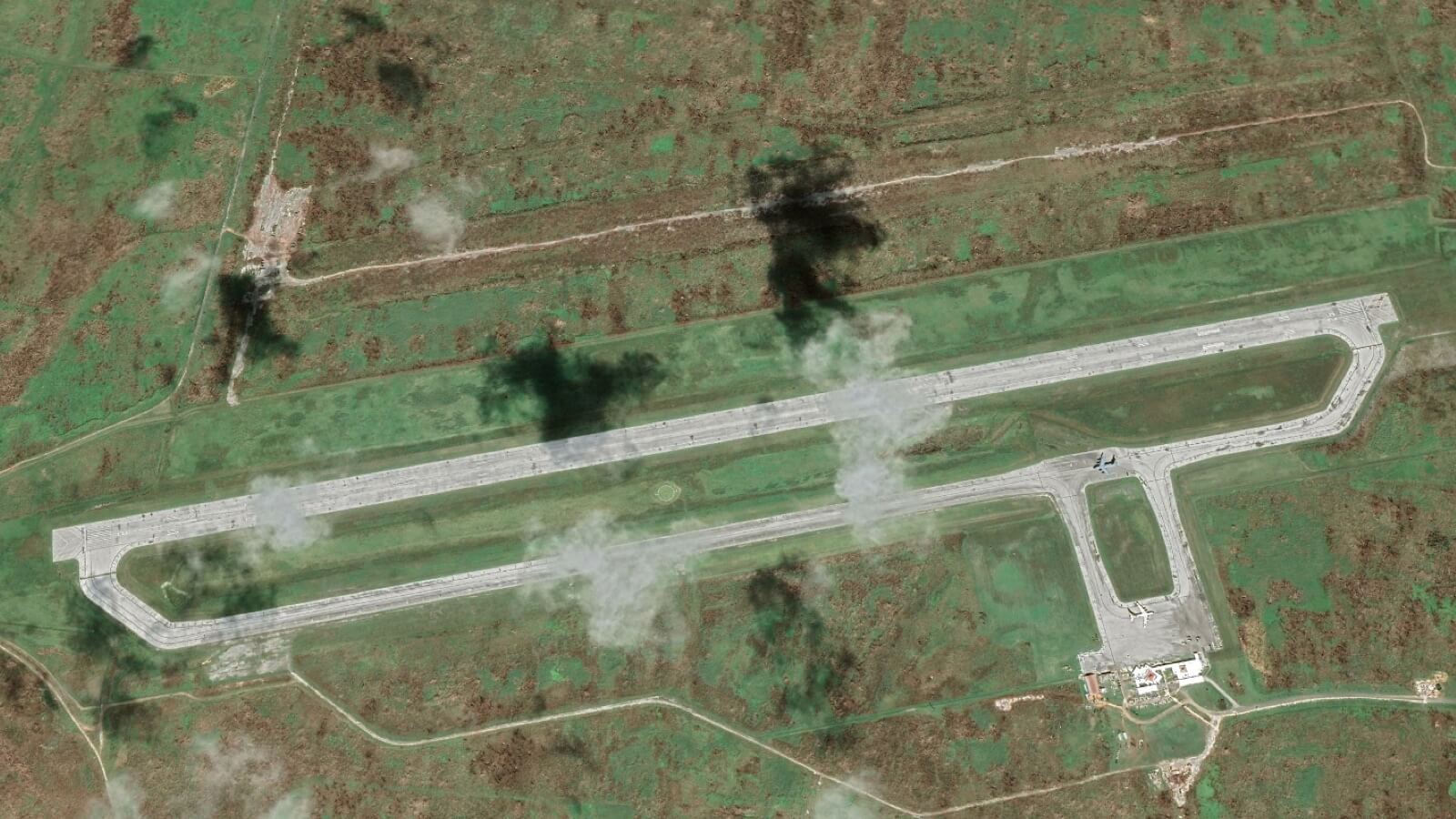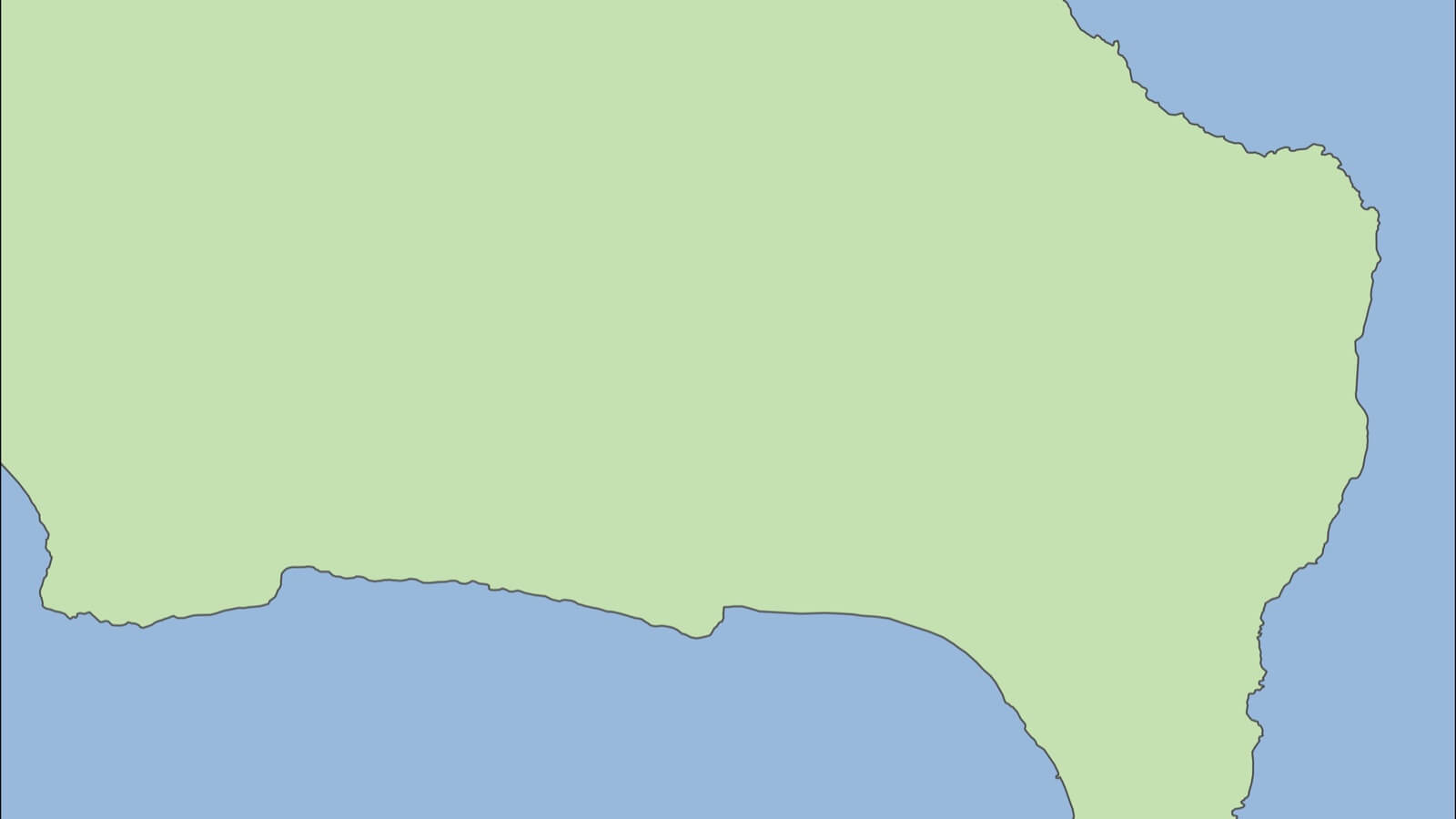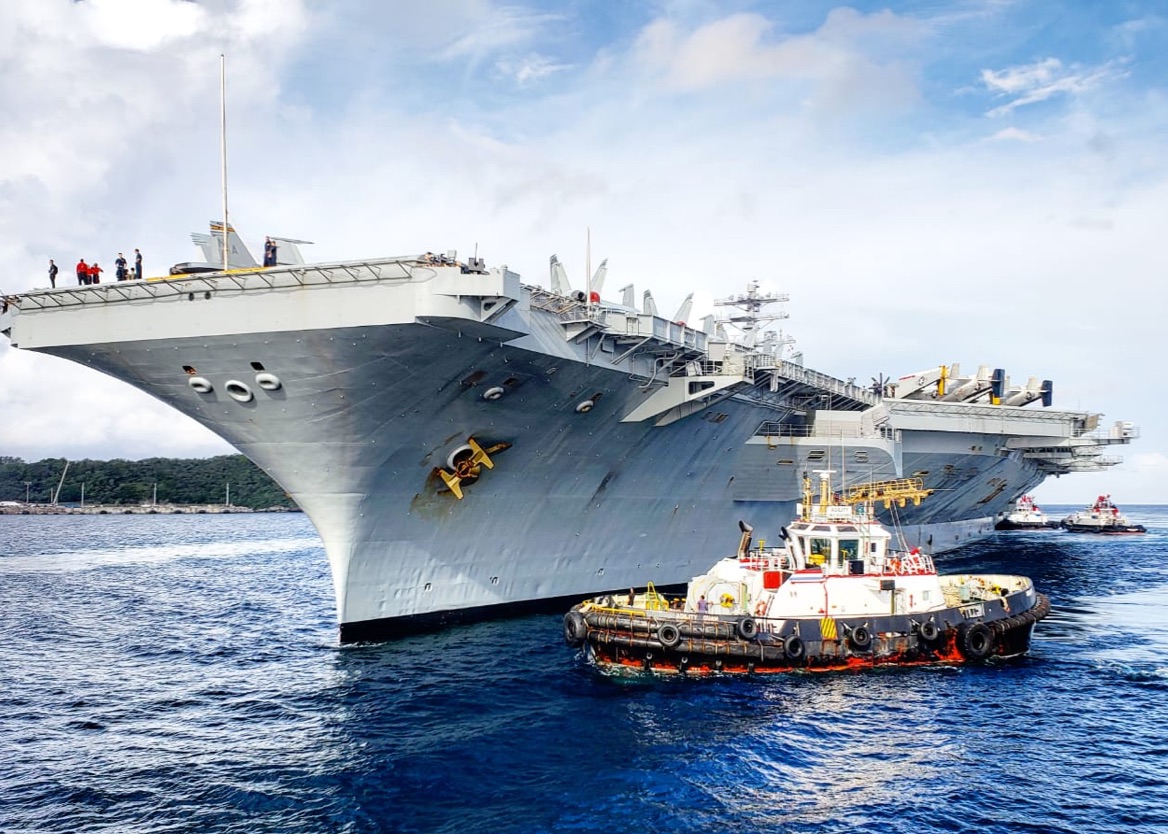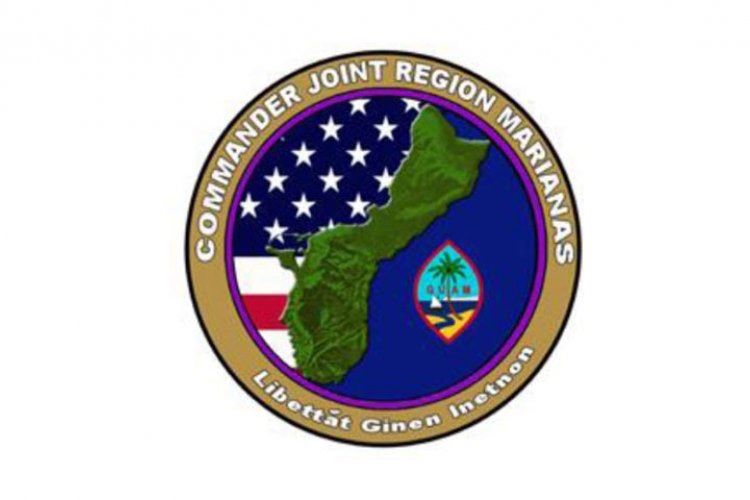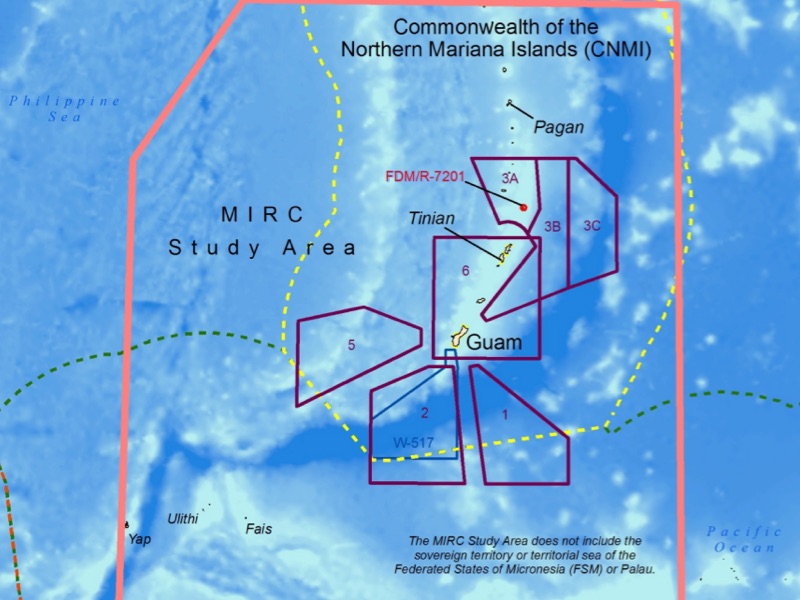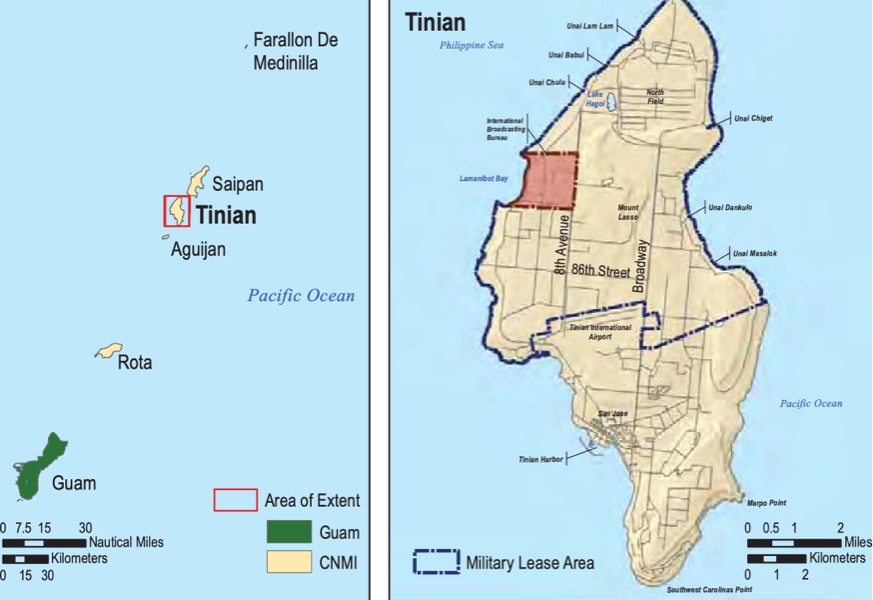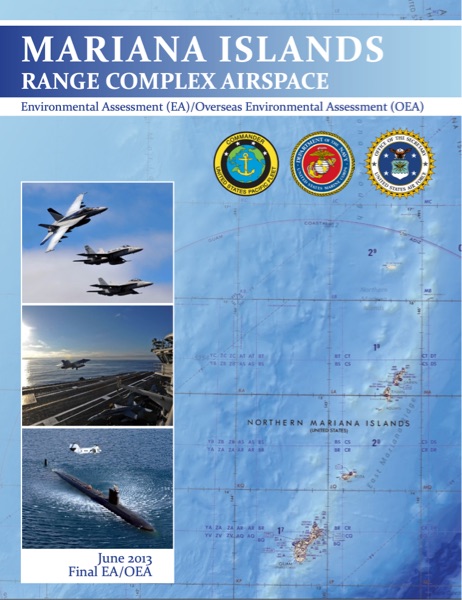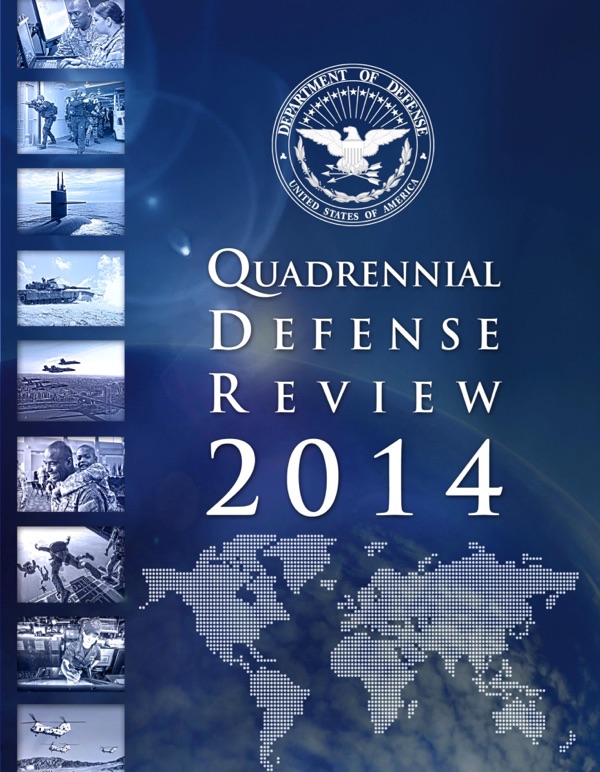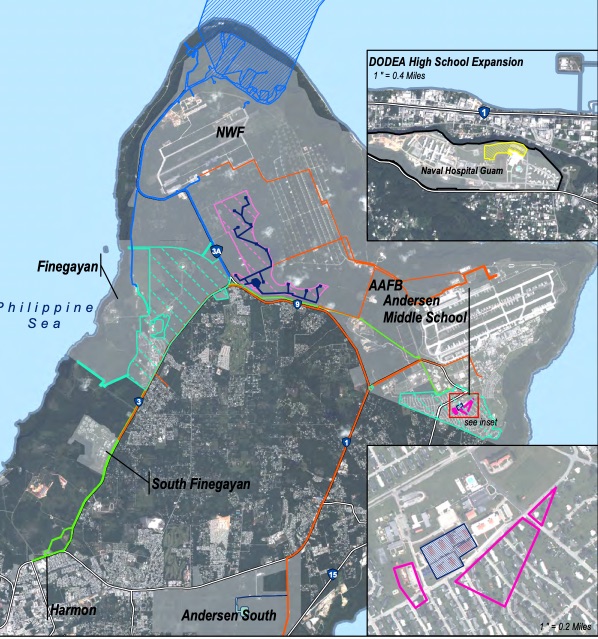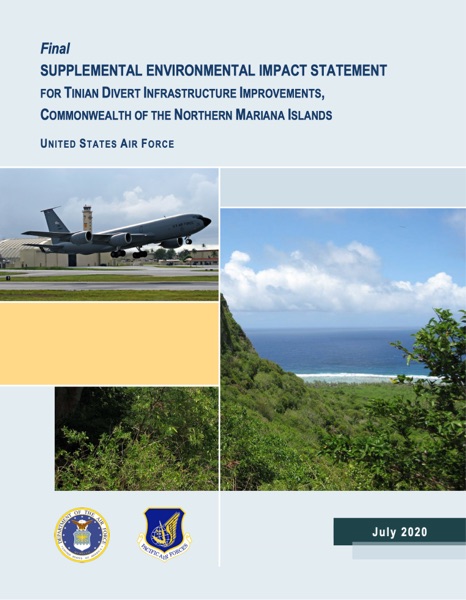The Divert Activities and Exercises Project (“Divert”) is intended to provide resiliency, training resources, and mission capabilities that could be called upon if and when access to Guam’s Andersen Air Force Base is limited or unavailable for weather or other reasons. It includes two primary components: (1) airfield improvements providing additional capacity for military aircraft in training activities, humanitarian assistance, and support for disaster relief; and (2) facilities and infrastructure to support KC-135 tanker aircraft.
Initial Project
In 2012, the United States Air Force identified Saipan International Airport as its “preferred” location and published a Draft Environmental Impact Statement (“EIS”) containing detailed plans for runway and military use of the Airport. Commenters – including Lt. Governor Eloy Inos and Tinian Mayor Ramon Dela Cruz – suggested Tinian would be a more appropriate location for the project.
In response, the Air Force modified its proposal to provide additional options on Tinian, as well as a “hybrid” alternative involving facilities on both Saipan and Tinian. The CNMI government expressed concern about several of these options, noting that they would involve acquisition of additional lands by the United States. Commenting on the modified proposal, Lieutenant Governor Ralph DLG. Torres explained that such acquisitions would violate both the letter and the spirit of the Covenant and Technical Agreement between the CNMI and the United States.
In 2016, the Air Force approved a further modified version of the Divert project located on the north side of Tinian International Airport.
Supplemental Review
Following initial approval of the Divert project, the CNMI and the Air Force negotiated an Airport Layout Plan and lease. As part of the negotiations, the Defense Department agreed to take the (larger and more impactful) CJMT project “off the table” and focus instead on Divert. In 2019, the CNMI and the Air Force agreed to terms worth roughly $22 million.
While negotiations were ongoing, however, the Air Force reconsidered its initial plan to supply fuel to project facilities by truck, noting that a fuel pipeline might be safer and cause less damage to the Tinian roadway system. The Air Force then prepared a Draft Supplemental EIS evaluating an updated project design involving a fuel pipeline connecting the Tinian seaport to Tinian International Airport, related infrastructure improvements at the seaport, and road improvements.
Current Status
In July 2020, the Air Force released a Final Supplemental EIS finding that construction of the fuel pipeline would be safer and less environmentally impactful than its original plan to transport fuel by truck.
Additional information about Divert can be found here.
